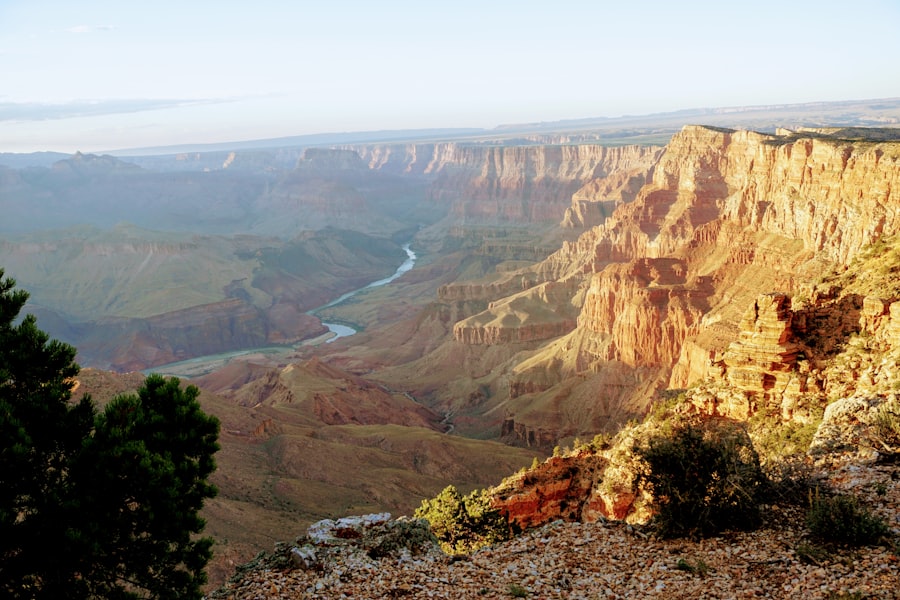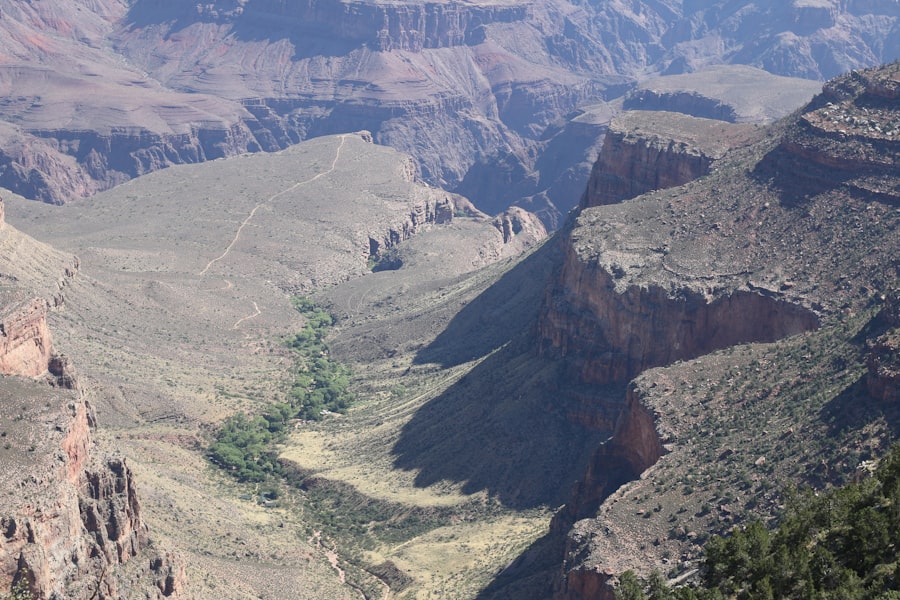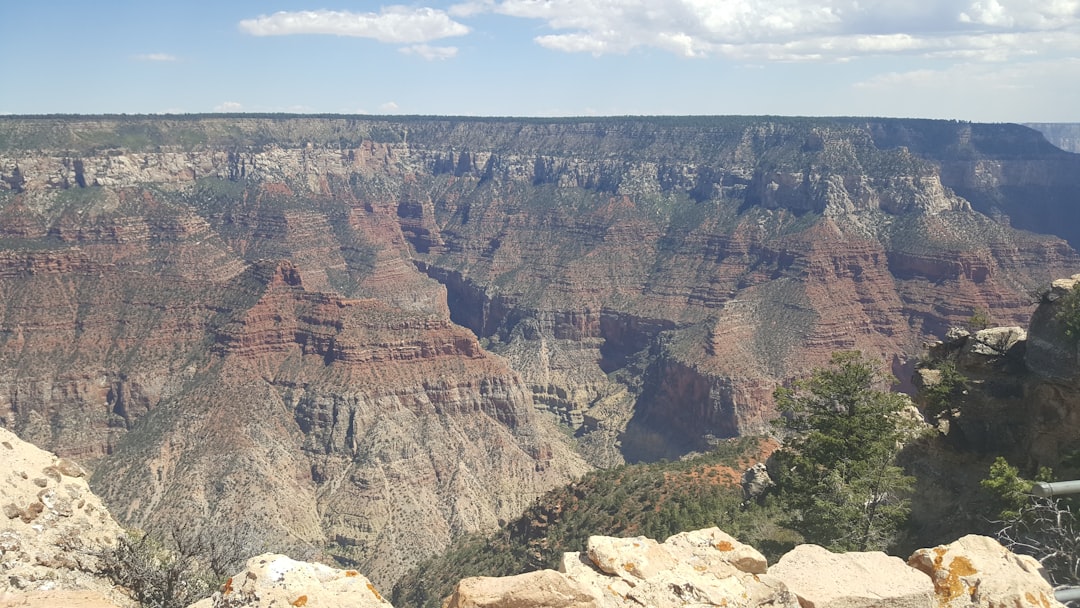The Grand Canyon, a breathtaking natural wonder, has long captivated the imagination of scientists, historians, and adventurers alike. Its origins are shrouded in mystery, with various theories attempting to explain how this colossal chasm came to be. The prevailing geological consensus suggests that the canyon was carved by the relentless flow of the Colorado River over millions of years.
However, this explanation only scratches the surface of a much deeper enigma. The interplay of geological forces, erosion, and sedimentation has created a landscape that tells a story of Earth’s history, yet many questions remain unanswered. Geologists have proposed that the canyon’s formation began around five to six million years ago, but some researchers argue that the processes that led to its current state may have started much earlier.
The layers of rock visible in the canyon walls reveal a timeline that stretches back nearly two billion years, showcasing a complex history of volcanic activity, tectonic shifts, and erosion. As scientists continue to study the canyon’s geology, they uncover new insights that challenge existing theories and deepen the mystery surrounding its origins. The Grand Canyon stands not only as a testament to nature’s power but also as a puzzle waiting to be solved.
Key Takeaways
- The Grand Canyon’s origins remain enigmatic, with ongoing debates about how it was formed.
- Strange artifacts found in the Grand Canyon have sparked theories about a lost civilization that once inhabited the area.
- Unexplained fossils in the Grand Canyon provide clues about the region’s ancient past and the creatures that once roamed there.
- Cryptic petroglyphs found in the Grand Canyon continue to baffle researchers as they attempt to decipher their meanings.
- The disappearance of the Anasazi civilization from the Grand Canyon has led to numerous theories and speculations about their fate.
Strange Artifacts Found in the Grand Canyon: Clues to a Lost Civilization?
Throughout history, explorers and archaeologists have stumbled upon strange artifacts within the Grand Canyon, igniting speculation about the existence of a lost civilization. These discoveries range from ancient tools and pottery shards to more enigmatic items that defy easy explanation. Some artifacts suggest that advanced societies may have once thrived in this rugged landscape, leaving behind remnants of their culture and technology.
The implications of these findings are profound, raising questions about who these people were and what ultimately led to their disappearance. One particularly intriguing discovery was made in the early 1900s when a team of explorers reported finding a series of caves filled with artifacts that appeared to belong to an unknown civilization. Among these items were intricately carved stone tools and unusual pottery that bore no resemblance to known Native American cultures.
This revelation sparked widespread interest and debate, with some theorists positing that these artifacts could be evidence of an ancient society that predates recorded history. While mainstream archaeology remains cautious about these claims, the allure of lost civilizations continues to fuel exploration and research in the Grand Canyon.
Unexplained Fossils: What Do They Reveal About the Grand Canyon’s Past?

The Grand Canyon is not only a geological marvel but also a treasure trove of fossils that provide valuable insights into its ancient past. Fossils found within the canyon’s rock layers tell a story of life that existed long before humans walked the Earth. From marine creatures to prehistoric plants, these remnants offer a glimpse into ecosystems that thrived millions of years ago.
However, some fossils found in the canyon have puzzled paleontologists, leading to questions about their origins and significance. Among the most perplexing discoveries are fossils of species that seem out of place in the canyon’s current environment. For instance, marine fossils found high above sea level suggest that vast oceans once covered parts of what is now dry land.
This raises intriguing questions about climate change and geological shifts over time. Additionally, some fossils exhibit characteristics that do not align with known species, prompting speculation about undiscovered life forms that may have existed in the distant past. As researchers continue to analyze these fossils, they hope to unlock further secrets about the Grand Canyon’s dynamic history.
Cryptic Petroglyphs: Deciphering the Ancient Messages of the Grand Canyon
| Location | Grand Canyon |
|---|---|
| Age | Estimated to be over 10,000 years old |
| Significance | Believed to contain messages from ancient civilizations |
| Number of Petroglyphs | Over 3,500 |
| Research | Ongoing efforts to decipher the symbols and messages |
Scattered throughout the Grand Canyon are cryptic petroglyphs etched into rock faces by ancient peoples who once inhabited the region. These intricate carvings serve as a window into the beliefs, stories, and experiences of those who came before us. Each petroglyph tells a story, yet many remain undeciphered, leaving scholars and enthusiasts alike to ponder their meanings.
The artistry displayed in these carvings reflects not only skill but also a deep connection to the land and its spiritual significance. Some petroglyphs depict animals, celestial bodies, and human figures, suggesting a rich tapestry of cultural narratives intertwined with the natural world. Researchers have attempted to interpret these symbols through various lenses, including anthropology and mythology.
However, the true meanings may forever elude modern understanding, as they are deeply rooted in the cultural contexts of their creators. As visitors explore these ancient artworks, they are reminded of the enduring legacy of those who once called the Grand Canyon home.
The Mystery of the Disappearing Anasazi: Uncovering the Truth Behind the Ancient Civilization
The Anasazi civilization, known for its remarkable cliff dwellings and intricate pottery, once flourished in the southwestern United States, including areas around the Grand Canyon. However, by the late 13th century, this advanced society mysteriously vanished from the region, leaving behind only ruins and unanswered questions. Scholars have long debated the reasons for their disappearance, with theories ranging from drought and resource depletion to social upheaval and migration.
Archaeological evidence suggests that the Anasazi were highly skilled farmers who developed sophisticated irrigation systems to sustain their communities. Yet, as climate patterns shifted and resources became scarce, their way of life was threatened. Some researchers propose that prolonged droughts forced them to abandon their settlements in search of more hospitable lands.
Others argue that internal conflicts or external pressures from neighboring tribes may have played a role in their decline. The enigma surrounding the Anasazi serves as a poignant reminder of how environmental changes can shape human history.
Baffling Geologic Formations: How Did the Grand Canyon Form?

The Grand Canyon is renowned for its stunning geologic formations that showcase millions of years of Earth’s history. The interplay between erosion, sedimentation, and tectonic activity has created a landscape filled with awe-inspiring features such as buttes, mesas, and spires. However, understanding how these formations came to be is no simple task.
Geologists continue to study the complex processes that shaped this iconic landscape. One prevailing theory suggests that the Colorado River played a crucial role in carving out the canyon over millions of years. As water flowed through the region, it eroded rock layers and transported sediment downstream.
This process was further accelerated by geological uplift caused by tectonic forces, which raised the Colorado Plateau and exposed ancient rock layers to erosion. Yet, some formations appear to defy conventional explanations, leading researchers to explore alternative theories involving volcanic activity or glacial influences. The Grand Canyon remains a dynamic laboratory for geologists seeking to unravel its geological mysteries.
The Elusive Lost City of the Grand Canyon: Myth or Reality?
Legends of a lost city hidden within the depths of the Grand Canyon have captured imaginations for generations. Tales of an advanced civilization with grand architecture and untold riches have fueled countless expeditions into its rugged terrain. While many dismiss these stories as mere myth or folklore, others believe there may be some truth behind them.
Reports from early explorers often mentioned mysterious structures or artifacts that hinted at a once-thriving society. Despite extensive searches over the years, no definitive evidence has been found to confirm the existence of such a city. Skeptics argue that these tales are likely exaggerated accounts born from misinterpretations or wishful thinking.
However, proponents of the lost city theory point to unexplained ruins and artifacts discovered in remote areas as potential clues waiting to be uncovered. Whether fact or fiction, the allure of a lost city continues to inspire adventurers and researchers alike.
Mysterious Caves and Tunnels: Exploring the Hidden Depths of the Grand Canyon
Beneath the surface of the Grand Canyon lies a network of mysterious caves and tunnels that beckon explorers with their secrets. These subterranean passages have long fascinated both scientists and thrill-seekers alike. Some caves contain stunning formations such as stalactites and stalagmites, while others hold archaeological treasures waiting to be discovered.
The sheer scale and complexity of these underground systems raise questions about their formation and purpose. Explorations into these caves have revealed evidence of ancient human habitation, including artifacts left behind by early inhabitants who sought refuge from harsh weather conditions or predators. Some researchers speculate that these caves may have served as sacred spaces for rituals or gatherings among indigenous peoples.
However, many areas remain unexplored due to their remote locations and challenging access points. As technology advances and exploration techniques improve, there is hope that new discoveries will shed light on the hidden depths of this iconic landscape.
Unidentified Flying Objects: Are There UFO Sightings in the Grand Canyon?
The Grand Canyon has not only been a site for geological wonders but also a hotspot for UFO sightings over the years. Reports from visitors and locals alike have described strange lights in the sky and unidentified flying objects darting above this majestic landscape. While skeptics attribute these sightings to natural phenomena or misidentified aircraft, believers argue that there may be more to these encounters than meets the eye.
These reports often coincide with significant events or changes in local culture, leading some to speculate about potential connections between extraterrestrial activity and human history in this area. Whether one views these sightings as mere coincidence or something more profound remains a topic of debate among both skeptics and believers alike.
The Haunting Legends and Myths of the Grand Canyon: Fact or Fiction?
The Grand Canyon is steeped in legends and myths that add an air of mystique to its already awe-inspiring beauty. Stories passed down through generations speak of spirits inhabiting its depths or ancient beings who once roamed its vast expanse. These tales often reflect cultural beliefs and values held by indigenous peoples who view the canyon as sacred ground.
Some legends recount encounters with supernatural beings or cautionary tales warning against venturing too far into its remote areas. While many dismiss these stories as mere folklore, they serve as reminders of humanity’s enduring fascination with nature’s mysteries. As visitors traverse this iconic landscape today, they may find themselves pondering whether there is truth behind these haunting legends or if they are simply products of imagination.
The Unseen Forces of the Grand Canyon: Unexplained Phenomena and Paranormal Activity
Beyond its geological wonders and rich history lies an undercurrent of unexplained phenomena reported by those who have ventured into the depths of the Grand Canyon. From strange sounds echoing through its canyons to inexplicable feelings of unease experienced by hikers, many claim to have encountered forces beyond comprehension during their visits.
Some individuals report feeling an overwhelming sense of presence while exploring certain areas within the canyon—an inexplicable sensation that something unseen is watching them from afar. Others describe witnessing unusual lights flickering in remote locations at night or hearing whispers carried by winds through narrow passages. While skeptics attribute these experiences to natural causes such as wind patterns or wildlife sounds, believers argue that they may be evidence of something more profound at play within this majestic landscape.
In conclusion, while science has provided valuable insights into understanding aspects like geology and ecology within this iconic landmark—there remains much mystery surrounding its origins and significance throughout human history—inviting continued exploration into both its physical depths as well as its cultural narratives woven into every rock face along its rim.
In recent years, the Grand Canyon has been the subject of numerous intriguing discoveries that continue to baffle researchers and enthusiasts alike. Among these are mysterious artifacts and structures that suggest the presence of ancient civilizations with advanced knowledge. For those interested in delving deeper into these enigmatic findings, an article on X File Findings explores similar unexplained phenomena and offers insights into the ongoing investigations surrounding these discoveries. This resource provides a comprehensive look at the theories and evidence that challenge our understanding of history and the secrets hidden within the Grand Canyon.
WATCH THIS! 👺 The Grand Canyon Cover-Up: Did the Smithsonian Hide Evidence of Giants?
FAQs
What are some unexplained discoveries in the Grand Canyon?
Some unexplained discoveries in the Grand Canyon include ancient Egyptian artifacts, mysterious caves and tunnels, and strange rock formations that defy geological explanation.
Have any ancient Egyptian artifacts been found in the Grand Canyon?
There have been claims of ancient Egyptian artifacts being found in the Grand Canyon, but these claims are not supported by credible evidence. The alleged discoveries are often attributed to hoaxes or misinterpretations of natural formations.
Are there mysterious caves and tunnels in the Grand Canyon?
There have been reports of mysterious caves and tunnels in the Grand Canyon, but many of these claims are unsubstantiated. Some researchers believe that these stories may be based on Native American legends or folklore.
What are some strange rock formations in the Grand Canyon?
The Grand Canyon is known for its stunning and unique rock formations, but there are also some formations that have puzzled geologists. These include the Supai Princess, a rock formation that resembles a human figure, and the Vishnu Temple, which has unusual and unexplained erosion patterns.
Are there any scientific explanations for these unexplained discoveries?
Many of the unexplained discoveries in the Grand Canyon can be attributed to natural geological processes, erosion, and the complex history of the region. While some mysteries remain, scientists continue to study and research these phenomena to better understand the geology of the Grand Canyon.
